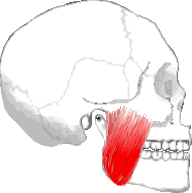My Jaw, My Puppy, Myself
OK, I am trying to be on a schedule with writing these posts, and, mea culpa, I fell off the schedule. The bus. What have you.
But rather than beat myself up, I’ll do as I tell my students: get back on the bus. No point in dwelling on it, making excuses, apologizing. Just do the work. This post is going to wander a bit on its journey today, but we’ll get somewhere eventually…
Part of the reason why I missed my deadline is that my family got a new Miniature Australian Shepherd dog named Mabel yesterday. Very exciting times! And all those little corrections we’re having to do, “no,” “tsst,” “off,” etc., aren’t just negative reinforcement. We have to redirect her with positive things that she would prefer. So having a treat handy, a chew toy to substitute for the thing she shouldn’t is very important.
Well what does that have to do with voice training? Well, like dog training, we have to be consistent in our work on the voice. We have to reinforce the good stuff, and redirect the stuff we don’t want. Of course, we have the benefit of being able to understand our goals and make choices to get there, but there are elements of training that do require repetition and reinforcement so that they become positive, ingrained habits and not things we have to think about.
 One habit I’m struggling with at present has to do with my jaw. I’ve been doing jaw exercises for voice work since I was a high school student in the early eighties. I first learned to shake my jaw when I went to the Boston University Summer Theatre Institute http://www.bu.edu/cfa/busti/ in the summer of 1982. Thirty years of jaw shaking. For that whole time, I really have never had to struggle with jaw tension. Well, this month, my jaw seems to have tightened up. I am now getting some clicking in my jaw, a sign of TemporoMandibular Joint Disorder TMJD . Whether it is related to stress, and there’s been a fair amount of that lately, or something more mechanical (like an injury), my jaw is more tense and when I massage my jaw muscles, or masseter muscles, they are sore and I can feel knots.
One habit I’m struggling with at present has to do with my jaw. I’ve been doing jaw exercises for voice work since I was a high school student in the early eighties. I first learned to shake my jaw when I went to the Boston University Summer Theatre Institute http://www.bu.edu/cfa/busti/ in the summer of 1982. Thirty years of jaw shaking. For that whole time, I really have never had to struggle with jaw tension. Well, this month, my jaw seems to have tightened up. I am now getting some clicking in my jaw, a sign of TemporoMandibular Joint Disorder TMJD . Whether it is related to stress, and there’s been a fair amount of that lately, or something more mechanical (like an injury), my jaw is more tense and when I massage my jaw muscles, or masseter muscles, they are sore and I can feel knots.
The masseter muscle is easy to massage. Find the notch about an inch in front of your ear canal, and press firmly, using either your thumbs or your fingers. Then pull downward through the body of the muscle toward the bottom back corner of your jaw. There’s a good explanation of the starting place for this here.
Tight jaw can also lead to tight tongue root, as you may begin to use the tongue root to open the jaw rather than letting gravity help. So placing your index fingertips just below your lower lip, press your thumbs into the base of your tongue just behind the underside of your chin. Try to keep your tongue relaxed in your mouth and let your jaw hang open naturally.
Then take some time to just let the muscles of your face relax and have your jaw hang open, as if you’re “catching flies.” Be sure to check in with your alignment, so that your feeling those Alexander principles of “Forward and Up” — lengthening the back of the neck helps to release the jaw. I have, at times, tried hooking a finger in my mouth, and letting the weight of my hand encourage my jaw to release, while I let all the muscles of my face go.
Here’s a good opportunity to share a great resource for facial muscles: Artnatomy (requires Flash). If you click on the “Application” tab, you can select various muscles of the face and then find out about that muscles’ way of working. Fabulous illustrations, both in a simplified schematic model and an artistic “naturalistic” model. With animations showing how the muscles cause expression, it’s a fabulous resource for actors and artists (and even plastic surgeons!). Unfortunately, the masseter isn’t included in the artnatomy illustrations.
So my redirection, rather than the negative jaw clenching, and holding of tension, is to remind myself to release my jaw, to keep my lips-together-teeth-apart, relax my tongue onto the bottom of my mouth, to direct my head forward and up, and to be in the moment. On the bus.